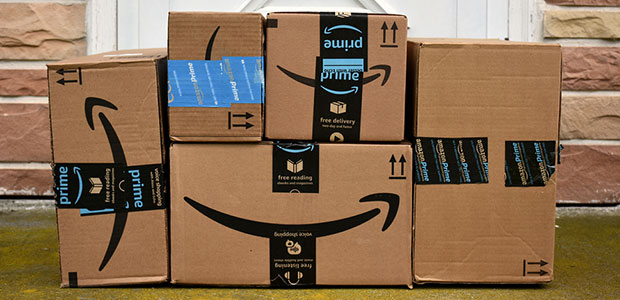
Amazon ‘Injury Mills’ Won’t Slow Down This Holiday Season
The monopolizing technology company is taking the heat for the way it works its employees to the bone—but that doesn’t seem to be stopping Amazon from pumping out nearly a million packages every 24 hours.
Amazon: the behemoth of all deals. Fast shipping, endless product options, and cheap, too. While the consumer end of it all seems pretty great, the workers behind the scenes are getting sustaining injuries to keep up with demands, and many are losing their jobs.
One account of the situation by The Atlantic tells Candice Dixon’s story. Dixon began working at an Amazon warehouse in Eastvale, California and was thrown into the thick of the company’s mind-boggling commitment to automation, efficiency, and speed. But this commitment to serve consumers is hurting workers and employees, expecting them to simply keep up.
Dixon’s job looked like this: as a stower, she stood on the floor and filled a never-ending parade of merchandise racks. Other workers brought her boxes and boxes of goods for her to scan, lift, and load onto the rack. Protein powder, makeup, floaties, sea salt, plastic cars—the list goes on. She’d use a stepladder to put things on top of the rack. For heavy items like pet food, she’d have to squat and hoist, pop back up, and grab the next one. When a rack was full, she’d press a button, and a robot would zip it away while another robot brought another empty rack.
The warehouse never sleeps—with the rate at which consumers purchase something online, and the company’s promise of fast processing and delivery, the clock is always ticking. Dixon said that to meet her quota, she needed to scan a new item every 11 seconds, totaling to about 300 items an hour and thousands a day.
And Amazon tracked her progress, too. Dixon’s scan rate was constantly tracked, the data flowing to managers in real time, then crunched by a software system called ADAPT. Like the thousands of other workers in the warehouse, Dixon knew if she didn’t hit her target, she would be written up, and if she didn’t improve, she would lose her job.
It’s no secret Amazon rules the consumer world—especially over the holidays. Last holiday season, the company boasted about meeting their goal of getting one million packages out the door in 24 hours. The company celebrated by handing out t-shirts celebrating their induction into the “Million Unit Club.”
However, Dixon had left Amazon by then, and not by choice. At 54 years old, she had started the job in April of 2018, and within two months or nearly 100,000 items, the lifting had destroyed her back. A doctor approved by Amazon said her job was totally responsible for her injuries—she had bulging disks in her back, and she had a back sprain, joint inflammation, and chronic pain.
She could no longer work at Amazon. Even getting out of her chair or walking up the stairs is painful today, and her condition is unlikely to improve, according to her medical records.
Dixon is out of a job, and she’s worried she will lose her home if something doesn’t work out soon. Her workers’-compensation settlement is about to run out.
“I’m still too young to feel like I’m 90 years old,” Dixon said. “I don’t even know how I’m going to make it in a couple of months.
Meanwhile, Amazon chugs along. It’s famous speed and technological innovation has driven the company to be valued at well over $800 billion. As the nation’s second-largest private employer behind Walmart, Amazon has one of the richest CEO’s on Earth: Jeff Bezos.
But an investigation by Reveal from the Center of Investigative Reporting has called the company not an esteemed “speed machine,” but rather, the warehouses as “injury mills.”
Reveal amassed records of internal injury from 23 of the company’s 110 fulfillment centers. The rate of serious injuries for those facilities was over double the national average for the warehousing injury: 9.6 serious injuries per 100 full-time workers in 2018, compared with the industry average that year of 4.
Some centers were at or below the industry average, but Reveal found that some centers, like the Eastvale one Dixon worked at, were particularly dangerous. Dixon’s was one of 422 injuries recorded there last year.
And these Amazon trends don’t seem to be slowing down. Despite recent backlash against the company and its treatment of employees, Amazon is revving up for holiday demands. Many people will be going to Amazon’s website to get last minute gifts with a convenient click of a button, but they forget there are thousands of workers behind that button like Dixon doing literally back-breaking work.